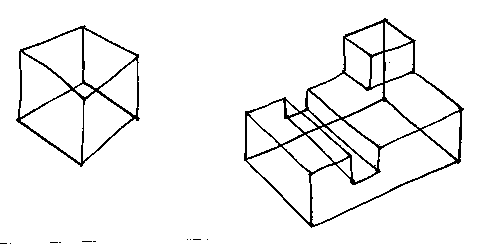
Precursors to Geometric models
Wire-frame `models'

Just store lists of lines in three dimensions.
Plot them in perspective.
They can get confusing when complicated (right hand figure), so...
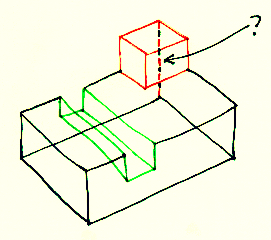
...use colour. But it's not always easy to decide what colour each line should be.
Depth cuing

Haloing
1. Sort lines by distance from the eye.
2. Plot each one from the back forwards surrounded by a halo of white:

3. This gives problems that need fixing at the corners:

Aerial perspective
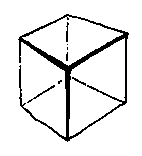
Plot dense lines at the front and get less dense as the lines
get further from the eye.
Rotate the wire frame on the display.
To see an example of this, check out the Java applet written by Dave Marshall at Cardiff. You move the models by holding the mouse button down and dragging. Click here.
Hidden Line Elimination
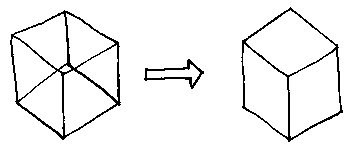
Can we go from a wire frame to a `solid' picture?

NO. In general this is impossible, because wire frames can be
ambiguous.
Face `models'
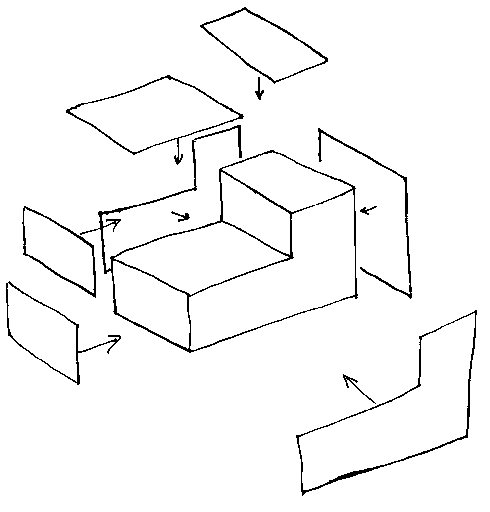
Model the object as a list of polygonal facets.
Now we can eliminate the hidden lines. We could use
the
painter's algorithm. Click on that for details.
Are face `models' a good way of
representing engineering components?

Curved surfaces will have to be approximated with facets. This
may cause problems (imagine a cylindrical shaft rotating in a
cylindrical bearing...).

The face model scheme allows us to create:
1. Objects with a thickness of 0,
2. Hanging faces.
Neither of these could be made as objects in the real world.
© Adrian Bowyer 1996